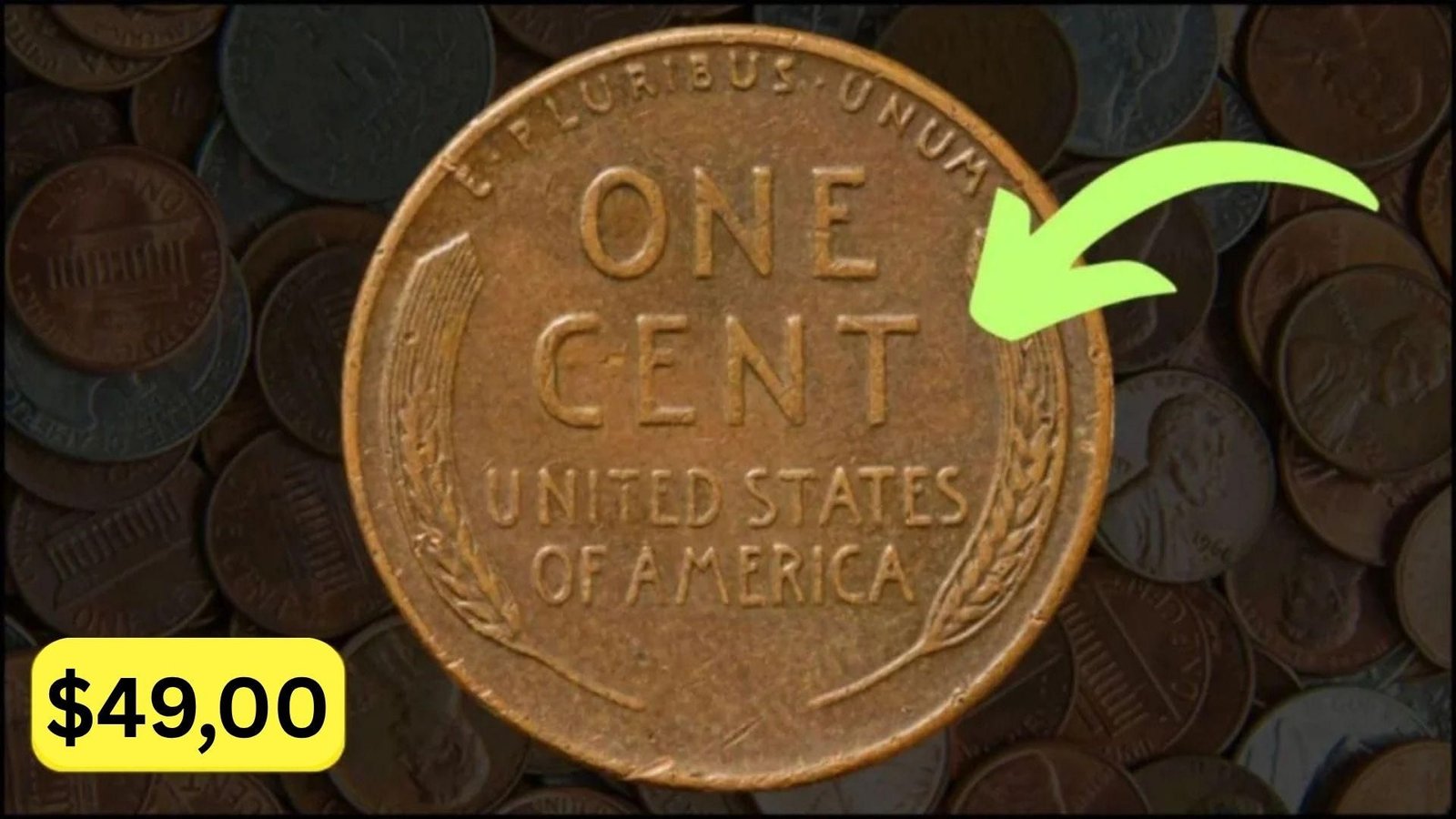Imagine finding a penny that could change your life. It’s not a fantasy—some Lincoln Wheat Pennies are worth as much as $49,000, and shockingly, a few are still hiding in pocket change across America. What makes these humble copper coins so valuable? Let’s dive into the mystery and see if you might be holding one without even knowing it.
What Is the Lincoln Wheat Penny?
The Lincoln Wheat Penny, minted from 1909 to 1958, is one of the most iconic coins in American history. Its design features Abraham Lincoln on the front and two wheat ears on the back, symbolizing prosperity and unity. Millions were made, yet a handful of special editions became worth a fortune.
A Brief History Behind the Wheat Penny
Introduced in 1909 to mark Lincoln’s 100th birthday, the Wheat Penny was the first US coin to feature a real person’s face. Designed by Victor D. Brenner, it originally included his initials “V.D.B.” on the reverse side—sparking controversy that led to its brief removal. Those early versions, known as 1909-S VDB Wheat Pennies, are among the most sought-after coins in existence.
Why Some Wheat Pennies Are Worth $49,000
Not every Wheat Penny is valuable, but rare mint errors, limited mintages, and pristine condition can skyrocket prices. For example, the 1943 Copper Wheat Penny, accidentally struck on bronze instead of steel during World War II, has fetched up to $49,000 at auction. Collectors hunt for these oddities because they represent a perfect mix of history, rarity, and intrigue.
Key Lincoln Wheat Pennies Worth Thousands
| Year | Mint Mark | Metal Composition | Est. Value Range |
|---|---|---|---|
| 1909-S VDB | San Francisco | Bronze | $1,000–$3,000 |
| 1914-D | Denver | Bronze | $2,000–$10,000 |
| 1922 No D | Philadelphia | Bronze | $5,000–$20,000 |
| 1943 Bronze | Philadelphia | Copper | $30,000–$49,000+ |
| 1955 Doubled Die | Philadelphia | Bronze | $1,500–$20,000 |
Why They’re Still in Circulation
It might sound impossible, but some Wheat Pennies still slip into circulation. As older coin collections get broken up or inherited, these rare pieces can end up back in jars, cash registers, or change rolls. Spotting one is rare—but not impossible.
How to Identify a Valuable Wheat Penny
Check the year and mint mark first. Coins minted in San Francisco (S), Denver (D), or with missing mint marks can all have different values. Next, look for errors such as doubling on letters or off-center strikes. Finally, check for metal differences—a 1943 penny made of copper instead of steel could make you a small fortune.
Collector Tips for Spotting Valuable Wheat Pennies
| Tip | Why It Matters |
|---|---|
| Check the year | Key dates like 1909, 1914, 1943 are valuable |
| Inspect mint marks | “S” or “D” marks often indicate rare issues |
| Look for doubling | Doubling on “IN GOD WE TRUST” or “LIBERTY” signals value |
| Test with a magnet | A real 1943 bronze penny won’t stick to magnets |
| Preserve condition | Clean, uncirculated coins fetch far higher prices |
Expert Advice for Collectors
Numismatic experts recommend using professional coin grading services like PCGS or NGC to authenticate valuable Wheat Pennies. Never clean or polish your coins—it can reduce their value dramatically. Store them in protective holders, and always verify their authenticity before selling or buying.
Frequently Asked Questions
Q: How can I tell if I have a 1943 Copper Penny?
A: Test it with a magnet. If it doesn’t stick, it’s likely copper and could be worth tens of thousands.
Q: Are all Wheat Pennies valuable?
A: No. Common years in worn condition are worth only a few cents, but rare dates and mint errors are highly prized.
Q: Where can I sell a valuable Wheat Penny?
A: Trusted auction houses, certified dealers, or online marketplaces like eBay (with authentication) are good options.
Conclusion: A Fortune in Your Pocket?
The Lincoln Wheat Penny is more than just small change—it’s a hidden piece of history that could be worth thousands of dollars. Whether it’s a 1909-S VDB or the legendary 1943 Copper Penny, treasures still lurk in plain sight. So next time you get change, take a closer look. You might be holding $49,000 without even realizing it.

